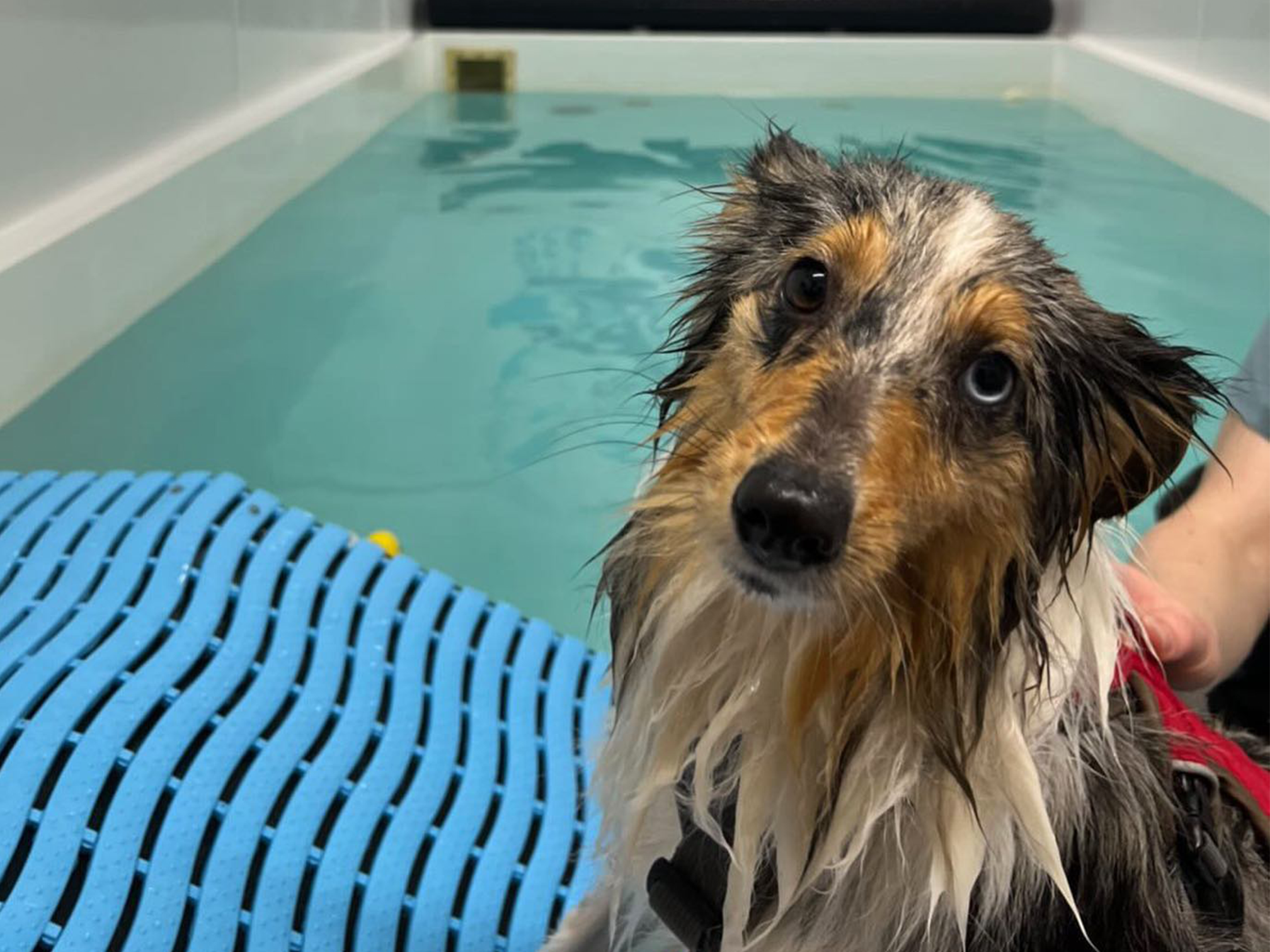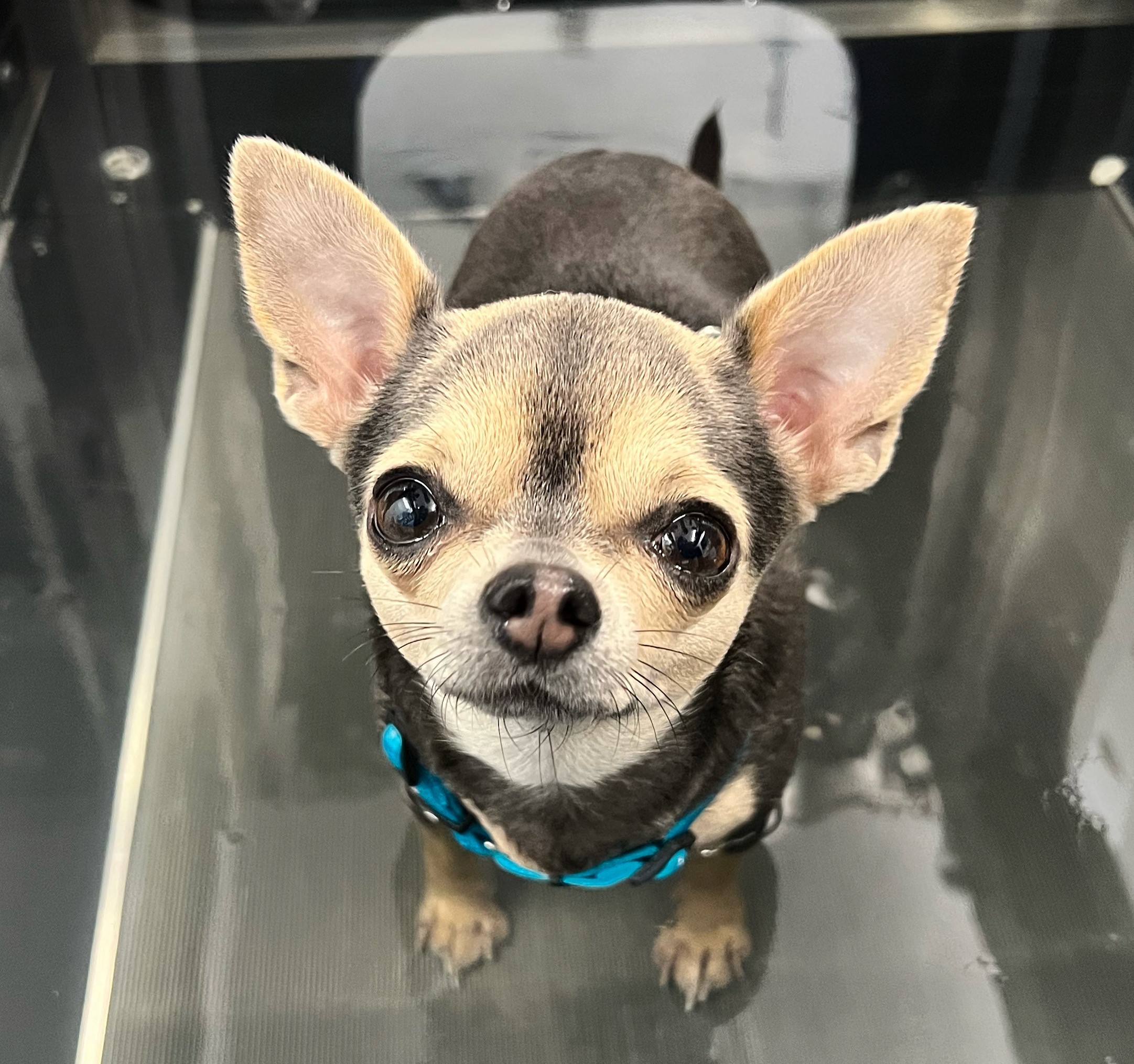Spinal injuries
There are several types of injuries that may impact the spine. Details of a few are below;
Central Nervous System
The sensory receptors in muscles, tendons and joints carry impulses towards the central nervous system (CNS). These are called Proprioceptors. The CNS receives simuli through the environment and the skin and from this information regulates the function of the body and controls the skeletal muscles. These nerves can process information about pain, temperature, touch and pressure. Therefore when a dog is in the treadmill the stimuli is enheightened by the hydrostatic pressure, the temperature of the water, the feeling of the belt and rollers of the treadmill and by the touch of the safety harness. All this information will be transported via the nervous system back to the CNS. Therefore by touching, or for example use of a scrunchie on a part of the dog where you need a reaction will increase the dogs awareness of that limb which are all techniques that we use when treating a dog.
Spinal Spondylosis
The key presenting indicators typically are stiffness of the back, back pain, muscle atrophy and lameness resulting is gait dysfunction and loss of balance. The dog may yelp when the back is touched. The dog may be suffering from loss of bowel or bladder control due to the direct pressure being placed on the spinal cord.
The presenting signs for Cervical paralysis are intense pain which can result in quadriplegia. If they are able to stand they will be reluctant to move. If moved they will cry out due to the pain. They will take longer to correct knuckling with reduced proprioception due to nerve damage. They be inco-ordinated.
The presenting signs for Thoracolumbar are similar to Cervical paralysis due to intense pain but can result in paraplegia. If they are able to stand they will be reluctant to move and Kyphosis will be present. If moved they will cry out due to the pain. They will take longer to correct knuckling with reduced proprioception due to nerve damage. They will also be inco-ordinated with tightly flexed hind legs and rigid extended front legs. Possible incontinence due to loss of feeling.
Wobblers Disease
The presenting indicators for Cervical Spondylomyelopathy (Wobblers Syndrome) will be a "wobbly gait" mostly in the back end. This may only present itself when walking on slippery floors and when the dog walks slowly. The head may be down as lifting it will cause pain. If the condition is more advanced it will present in all four legs. They will appear weak, struggling to get up and may "buckle over" with the front legs.
We would use the treadmill to treat spinal conditions because:
- The buoyancy of the water supports the spine
- We can get into the treadmill to replicate the movement of the limbs to re-educate the brain
- We can isolate limb movement to concentrate on affected limbs
- It provides maximum flexion and extension of the limbs
- Quickly increases muscle mass
- Helps to strengthen core muscles and therefore can reduce incontinence
- Re educates the gait pattern following the muscle atrophy in the fore or hind limbs
- Provides an earlier return to activity
- Very easy to observe the range of movement (ROM) through the glass sides
- The dog is unable to cheat unlike in the pool where they have a tendency to tuck their hind legs up making it difficult to get a good rom.
If you believe your dog is in need of Hydrotherapy, or your Vet has recommended treatment, first thing you need to do is call us on 01635 521915 or send us an email at info@ActNow-Newbury.co.uk
Contact Us
Call: 01635 521915
Email us







